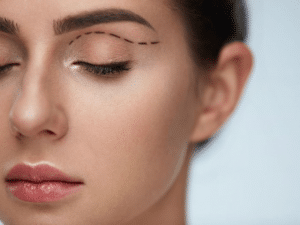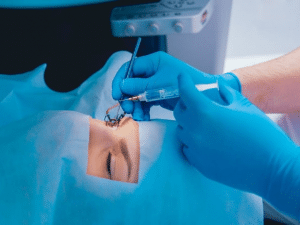Blepharoplasty
Blepharoplasty in Iran
Best Blepharoplasty clinics in Iran
More than 40,000 Iranian and foreign patients are going under eyelid surgery in Iran each year. eyelid surgery in Iran is on top of the middle-east regarding its skilled specialists and surgeons. Here are the best clinics for eyelid surgery in Iran:
- Maryam Clinic
Cost of eyelid surgery in Iran
There is a significant difference between the cost of eyelid surgery in Iran and other countries. The most important factors for the low price of it in Iran are:
- A large number of Blepharoplasty clinics in Iran
- A large number of candidates for eyelid surgery in Iran
Eyelid surgery cost in Iran varies depending on the eyelid surgery and the hospital. An average cost of eyelid surgery in Iran is $950.
Eyelid surgery cost in Iran in comparison with other countries
This surgery costs $6200 in the U.S., $5300 in Europe, $3000 in Thailand and $1800 in Turkey.
| Upper eyelid surgery | $860 |
| Lower eyelid surgery | $1260 |
| Upper & lower eyelid surgery | $1740 |
Best Blepharoplasty surgeons in Iran
More than 700.000 cosmetic surgeries are being performed each year in Iran. Experienced Iranian doctors with an excellent record are performing the operations.
One of the most important factors for choosing a good surgeon for eyelid surgery in Iran is the many eyelid surgeries performed by the doctor.
You can find the best doctors for eyelid surgery in Iran on our website by following their different experiences and before- after galleries.
Why should you travel to Iran for eyelid surgery?
Many patients travel to Iran for eyelid surgery. One of the reasons for this matter is Iranian specialists and surgeons who have high surgery success rates.
- Low cost of eyelid surgery in Iran
- Low cost of accommodation in Iran
- Well experienced doctors
- A high number of eyelid surgery in Iran
Eyelid surgery centres accordant with today’s European standards are performing the highest quality operations in Iran. Another reason for eyelid surgery in Iran is its lower cost compared to other countries.
How long should I stay for eyelid surgery in Iran?

About Blepharoplasty
Through the aging process, the skin, muscles and fatty tissue of the eyelids began to droop and make a person look old and unattractive. Eyelid Surgery has a cosmetic appeal. It can provide a youthful appearance to eyes and eyelids that droop or sag. As we age, the muscles in our eyelids lose strength, and the skin loses elasticity. A Blepharoplasty can restore full capability to the muscles in the eyelids and rejuvenate the skin, providing an all-around more youthful appearance. This surgery is not recommended for people who have diabetes, Grave’s disease, hypothyroidism, dry eye syndrome, glaucoma, retinal detachment, and high blood pressure.
Types of Blepharoplasty
- Functional Blepharoplasty: A functional blepharoplasty removes the excess skin that obscures the field of vision.
- Cosmetic Blepharoplasty: A cosmetic blepharoplasty can be performed on either the upper or lower eyelid, or on both.
Recommended For
- Adults with extra tissues on upper or lower eyelids
- Adults who have Loose skin below the eyes
- Adults with Puffy bags or Drooping upper lids
Before Blepharoplasty
First, the patient should visit or send pictures of the eye to the facial plastic surgeon to consult with him/her about the procedure and to inform him/her of past medical history. If the patient is taking aspirin or other anticoagulant medicines, he/she should stop them before surgery to prevent excessive bleeding during the operation. Some vision tests may be needed. Smoking should be avoided a few weeks before surgery.
During Blepharoplasty
The surgeon makes incisions just below the lashes of the lower lid and removes extra fat or muscle or skin.

Anaesthesia
During surgery, the patient will be given local or general anaesthesia based on condition.
Duration
This procedure lasts between one to three hours. Patients will be dismissed on the same day of the surgery, and they will be able to return to work in about 7 to 10 days.
Recovery
Patients may experience swelling, blurred vision, pain, redness and dry eye. These are common symptoms after the surgery. To ease these complications, the doctor may prescribe some medicines and eye drops. Patients should elevate their head for several days and use cold compresses to reduce swelling and bruising. They shall not wear contact lenses. Exercising is forbidden for a week or two. Smoking should be avoided, and direct sunlight into the eye is prohibited.